Hello everybody! I know some of you have been waiting for my doenjang and ganjang recipes for a long time! Today I feel a real sense of achievement to release this recipe here. It’s one of the recipes in my cookbook, and whether you have my book or not, this video and recipe should still be useful to you.
Korean fermented soybean paste, called doenjang (된장), is more than just a seasoning or an essential ingredient in many iconic Korean dishes. It’s part of who we are as Koreans and how we see ourselves. A meal of rice, kimchi, doenjang-soup (or doenjang-stew), and a few side dishes is for many Koreans, the definition of a meal: breakfast, lunch, or dinner. It’s impossible for us to imagine life without doenjang.
Salty, earthy, hearty, incredibly savory and delicious, it adds flavor to many dishes and makes them distinctively Korean. Making doenjang at home takes a long time, you have to be ready to commit to it for one year! It’s not hard to make, but takes patience and some hard work, and some special equipment. But as a bonus, Korean soup soy sauce (guk-ganjang:국간장) is a byproduct of making doenjang, so you get that delicious soy sauce for free!
Of course, you can always buy doenjang and guk-ganjang in a Korean grocery store, which is what most Koreans do. But the taste of store-bought can’t be compared to homemade doenjang and guk-ganjang, you will be knocked out over how delicious they are! And I’ve never found a brand of soup soy sauce in the store that satisfied me, which is why I always use fish sauce in my recipes as a substitute.
Besides the taste, making your own is fun and satisfying to eat. Over years of making, tasting, and fermenting these iconic Korean sauces, you’ll develop experience and sophistication in fermenting and eventually become a Korean food expert.
This video was a lot of fun to make. The recipe took me 2 years to develop, and the video took another year to film. It’s finally finished and I couldn’t be happier to share my recipe with you! Koreans traditionally start the process in the winter because the weather is good for drying soybean blocks. But I discovered that indoors, in my apartment in New York, any time is a good time to start making doenjang.
I hope you try it! Enjoy the recipe!
Special equipment
- An electric mat or blanket, or ondol-style heating in your house
- Cotton flour sacking or cheesecloth
- Cotton butcher’s twine
- A large shallow bamboo basket about 17 inches in diameter, or a large baking pan lined with waxed paper
- Dried rice straw or hay that’s been well washed and dried (optional)
- A cardboard box (an 18-x-10-x-7-inch box will hold 3 bean blocks)
- A 4- to 5-gallon Korean earthenware crock (hangari) with a lid
- A 5-quart Korean earthenware crock (hangari) with a lid
- 3-5 dried jujubes (daechu)
- 3-5 large dried hot chili red peppers (any variety; about 4 inches long)
- 3 (4-x-1½-x-1-inch) pieces hardwood charcoal
Ingredients
Makes 10 pounds of doenjang
- 5 pounds dried yellow soybeans (meju-kong), picked over, rinsed, and soaked in cold water for 24 hours
- 3½ gallons water
- 5 quarts plus ½ cup kosher salt (2 three-pound boxes of Diamond Crystal brand Kosher salt)
- 2 tablespoons honey
How to make doenjang
Make meju blocks from soybeans
Blocks of crushed soybeans are called meju (메주) in Korean, and they’re the foundation of doenjang-making.
- Drain the beans and put them in a large heavy pot. Add water that is three times as deep as the beans, cover, and cook over medium-high heat for 1 hour.
- Turn the heat down to medium and continue cooking until the beans are soft enough mash easily, 4½ to 5 hours, checking to make sure the beans remain covered with water, and replenishing as necessary. Drain the beans in a colander.
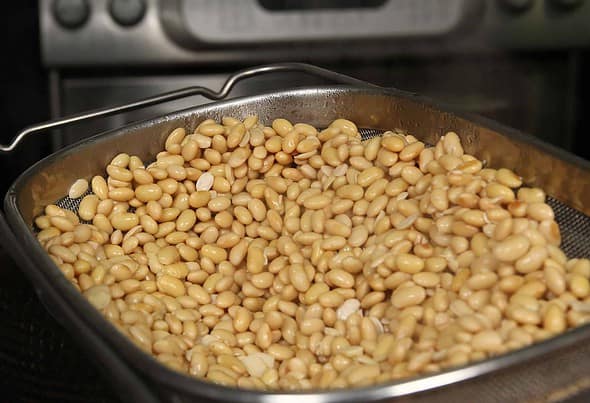
- Mash the drained beans to a paste in batches with a large mortar and pestle or in a food processor. Don’t finely grind them, leave some beans half-crushed.

- Divide the mashed beans into 3 portions. Knead each portion with both hands and shape into a firm rectangular block measuring 6 x 3 x 4 inches.


Ferment the meju
- Traditionally Koreans dry meju on the heated ondol floors of their homes, and if you live in Korea or have that kind of heating in your house, you can do that too. But in my NYC apartment I simulate ondol by putting an electric blanket on the floor. Line the blanket with a clean cotton cloth or waxed paper and set the blocks on top, or put them in an open basket. Set the heat to low. Dry the blocks, rotating them occasionally, until they are solid enough to hang, 3 to 4 days.

- Tie each block up in cotton twine and hang them. You can hang them outside but be sure to keep them covered and out of the rain, and if it’s too hot out they may rot. Inside, you can hang them from the ceiling with hooks. Wherever they hang, the spot should be cool and well-ventilated and all sides of the blocks should be exposed to air and not touching each other. Let the blocks hang for 6 weeks, until they are well dried out and smell a little pungent when you get your nose close to them.

- Now it’s time to ferment the bean blocks. Place a layer of dried rice straw or hay in the bottom of a cardboard box that’s just big enough to hold the blocks with a little space between them; the straw will insulate the blocks and attract good bacteria like Bacillus subtilis in the air. (Don’t worry if you can’t find straw or hay; the blocks will still attract good bacteria.)

- Cover the box and put it on the electric blanket. Set the heat to low and let the bean blocks ferment for 2 weeks. At this point, the well-fermented bean blocks will smell a little earthy and pungent and will be covered with white, brownish-yellow, or sometimes greenish fungi. (These fungi change the bean proteins to peptides and amino acids, which will give the bean paste its delicious nutty flavor.)
- Tie the fermented bean blocks up in cotton twine and hang from the ceiling, as before, for 1 month.


Soak the meju in brine
- Wash the blocks in cold water and to remove the fungi. Place the blocks in a shallow basket or on a baking sheet lined with waxed paper and let them dry in the sunlight for 1 day, turning them until every side of each block is dried.

- Combine the 3½ gallons water (56 cups) and 5 quarts of the kosher salt (20 cups) in a large bowl. Stir with a wooden spoon until the salt is thoroughly dissolved.
- Set out a 4- to 5-gallon earthenware crock. Put 2 pieces of the charcoal on a gas burner; turn on the flame, and heat until they are glowing red. (If you don’t have a gas burner, use the broiler: Put the charcoal pieces under the broiler and turn it on; remove the charcoal when it is red.) Use tongs to transfer the charcoal to the earthenware crock. Drizzle the honey over the burning charcoal. Cover the crock and wait for 5 minutes.

- Remove the lid. You will see lots of smoke and smell a good caramel aroma. This process sterilizes the inside of the crock and will give the sauce good flavor.
- Remove the charcoal and wipe the inside of the crock with paper towels. Add the bean blocks and salted water to the crock. Add the remaining piece of charcoal, the jujubes, and dried hot peppers; they will float on the surface of the water. (The charcoal will attract and absorb any dust. The jujubes add sweetness and the dried red peppers help prevent the blocks from going bad.) Evenly sprinkle ¼ cup salt over the tops of the meju blocks exposed to the air.

- Cover the crock with flour sacking or cheesecloth and put on the lid. Let the blocks soak in the salty water until well fermented, 2 to 3 months. On clear days remove the lid and let the crock sit in the sunlight. Close it at night and be sure to keep the crock covered with the cloth so bugs and dust can’t get in. As time passes, the salty water will turn brown and smell like deeply fermented soy sauce.

Separate the doenjang from the soy sauce
- Discard the charcoal, jujubes, and peppers. Transfer the soaked bean blocks to a large bowl. The blocks may have broken up during the soak, so use a bowl to scoop the soy sauce out of the crock and into a strainer set over another large bowl. Add any pieces of bean block to the bean block bowl. Save the soy sauce for making Korean soup soy sauce (gukganjang) later.
- Mix the doenjang with both hands, breaking it up into a paste, and transfer it to a 5-quart earthenware crock. Pack it down and sprinkle with the remaining ¼ cup kosher salt. Cover with the cotton cloth, secure it with a rubber band, and put on the lid.
- Put the doenjang crock in a sunny spot for its final fermentation. About twice a week on sunny days, remove the lid and let the sunlight shine into the crock through the cotton cloth. When it’s well fermented, the doenjang will smell sweet and taste salty and earthy, with a deep flavor. This will take 5 to 6 months. If it ever looks a little too dry on top, pour some of the separated soy sauce on top to make it moist again. You don’t need to stir it in.

Serving and storage
- Store the doenjang in the crock outside the house or at room temperature. Whenever you take some out, press the rest down with a spoon to keep out the air. Once in a while, take the lid off, cover with a cotton cloth, and let the sun hit it again.
Doenjang-making diary
Here’s a schedule of dates from a year of my doenjang-making. You might need to deviate from this timeline depending on how your project is going, but you get the idea of how long it takes and where you should be every month.
January 4 — Soaked the beans.
January 5 — Made the meju.
January 9 — Hung the meju up.
February 24 — Put the meju in a box with hay.
March 10 — Took the meju out of the box and hung them up.
April 10 — Washed the meju and let them dry in the sunlight.
April 11 — Soaked the meju in salty water.
June 11 — Separated doenjang and guk-ganjang.
June 22 — Made guk-ganjang.
December 1st — Doenjang was ready.
Maangchi's Amazon picks for this recipe
It's always best to buy Korean items at your local Korean grocery store, but I know that's not always possible so I chose these products on Amazon that are good quality. See more about how these items were chosen.



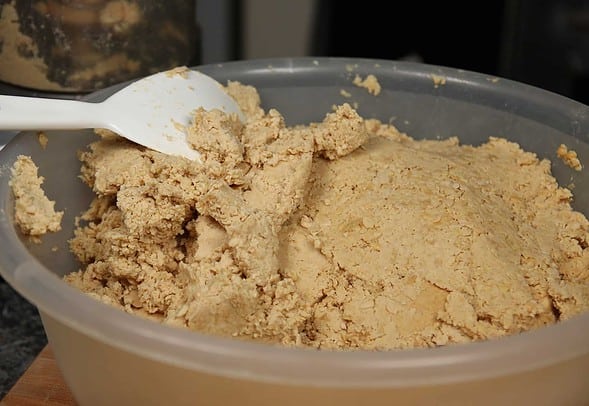
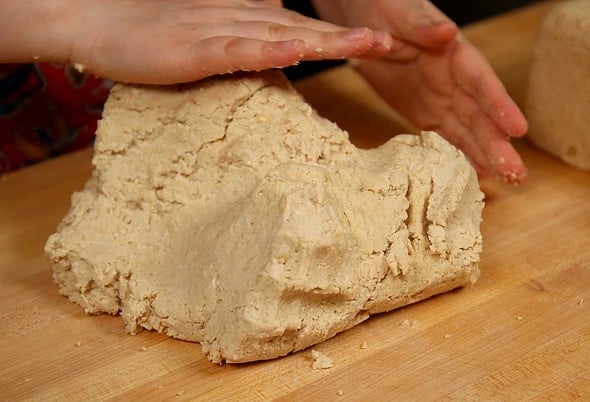
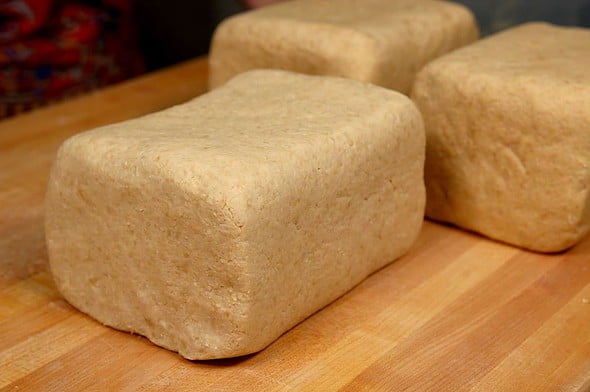
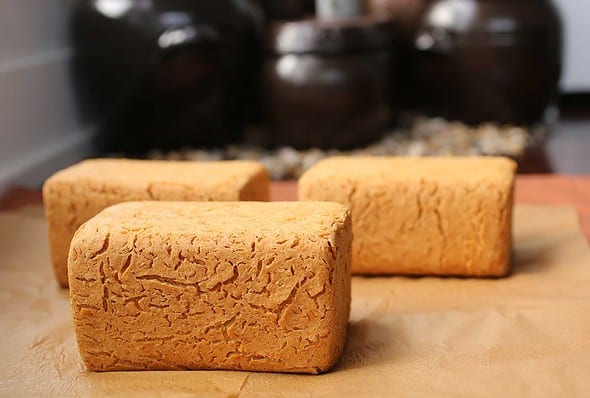
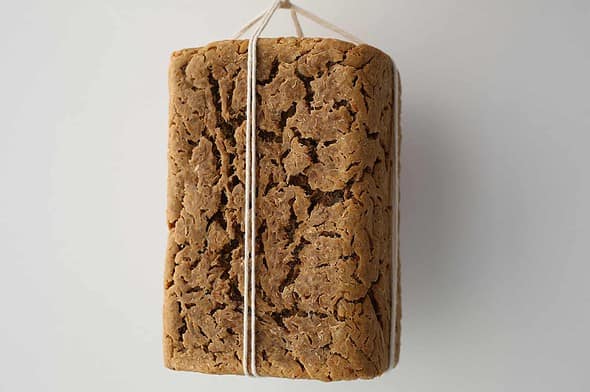
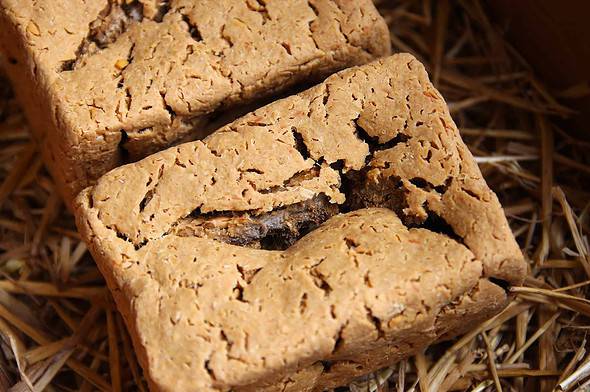
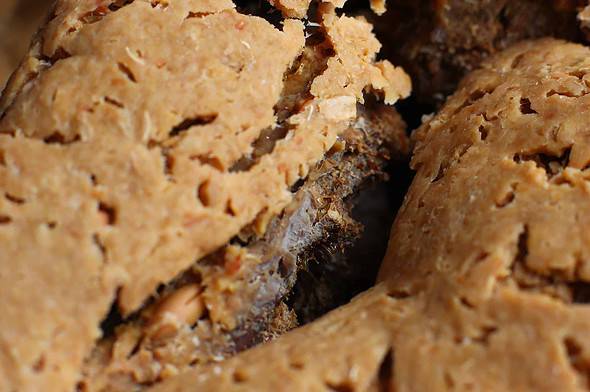
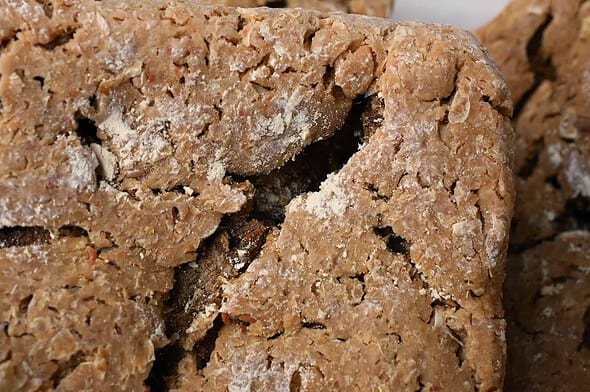
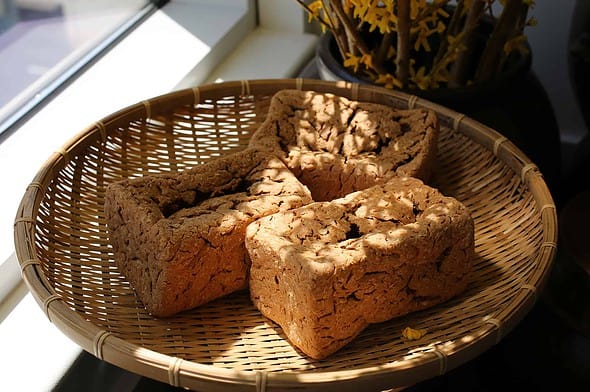
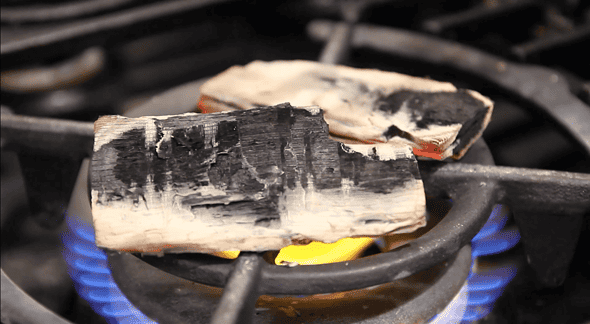
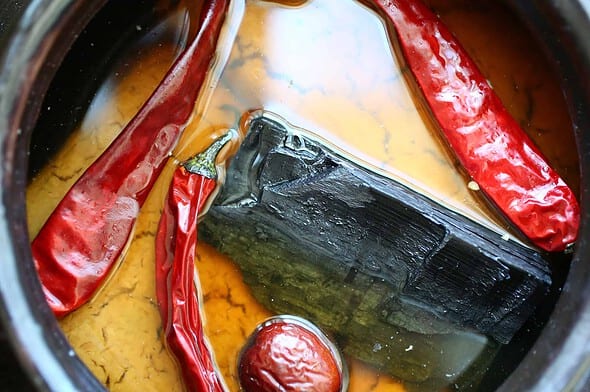
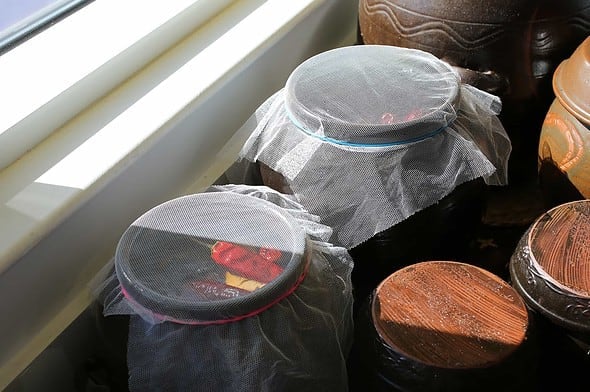
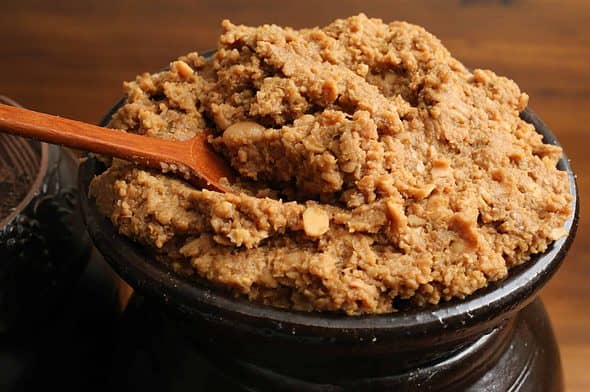























Does this look ok? This is after 3 weeks. I took out the white stuff(it had some green in it as well. Cleaned the charcoal and replaced the peppers and jujubes with new ones. I hope that was the right thing. Thanks.
See full size image
Yes, it looks great. You can clean out some fungus with a strainer if you want, but it means your soy sauce is fermenting well.
It needs lots of strong sunlight! Exciting!
Hello Maangchi!
Thank you for posting such detailed instructions on how to make delicious doenjang and gukganjang! I started on my first ever doenjang journey in January; I’m now ready to start soaking my meju in brine tonight!
I live in a second floor apartment, and would like to keep my hangari outside on the porch to prevent my dog from getting too curious. As we are close to the Rocky mountains, it is drier and hotter here, average 75-95 degrees Fahrenheit, up to 102 being extreme.
Is it a bad idea to have the hangari in the direct sunlight if the lid is closed?
I have a shady spot I can keep it in instead and just move into the sunlight when I will have the lid open for a few hours, but didn’t know if one spot is better than the other.
I make other fermented foods, as well as kombucha and kefir; I know direct sunlight and too much heat is detrimental to those types of ferments, but I don’t know if the same is true for doenjang.
Your expertise is greatly appreciated!
I love all your videos, and have made so many of your recipes! I usually make at least 2-3 Korean meals a week. Thank you for putting all these wonderful recipes out there for those of us who adore Korean food!
Jenna
You can keep it covered in the sunlight no problem. And when you open it to the sunlight be sure to cover it with a cheesecloth or cotton cloth folded over a few times so the sunlight goes through but no bugs or dust. Direct sunlight is good for it! Good luck with your doenjang project! When it’s done please let me know.
Thank you Maangchi, that is great to know! I will just keep the mesh covering the top all the time even under the lid, like you show in your video. This way no mistakes happen. :)
I attached a photo for you – I have very large squirrels where I live, so I was worried about leaving my meju to dry on the porch, and nowhere inside my apartment gets direct sunlight for more than a couple hours. So I improvised; took my meju with me to work and dried them on the dashboard of my car with the windows partially open. It worked so well! My car had a slight earthy, sweet smell when I left to go home!
I will let you know how it turns out!
~Jenna
See full size image
Hi Jenna,
Thank you so much for sharing this photo with the story.
I can tell you are such a passionate cook! I’m so happy to see that your meju is under your TLC. You carry them to work to help them get nice sunlight and protect them from potential squirrel attacks.
You really treat them as your babies! I can’t wait to share your story with all my other readers via my June 1st newsletter. Your doenjang project can’t go wrong!
Hello Maangchi, I wanted to update you!
My meju is enjoying the sunlight and is starting to smell a little pungent when I remove the lid! I even have little white and green blooms forming!
Also thank you for adding my story to your newsletter, it made me so happy!
~Jenna
See full size image
Maangchi please help!!!!
These are my meju blocks. They have been drying for a few days (3-4) and they are growing a lot of what appears to be mold.
Is this a cause for concern? Should I throw them away and start over?
See full size image
Hi,
How did you dry them? Did you dry them on en electric mat and rotate them time to time just as I said in the recipe?
How is the smell? I have many questions about the meju because the fungi on the meju look like something rotten. Without smelling and touching them I can’t give you a definite answer.
If they smell sour, you should throw them out because they are rotten and they will never give good aroma if you make doenjang with them. But the smell is ok in a good way, keep them and move forward to next step.
Can the freshly prepared meju blocks be kept under direct sunlight or on a pan with low flame, instead of electric heating mat. I live in India where climate is usually hot so we don’t need to use any heat g mats.
So I’m getting frustrated. I’ve spent time and money on the clay pots and soybeans etc. i asked a question last week with no reply. Has anyone out there had it where there was no fungi of any color on the meju block? Mine are so dry and I’ve had them in the heated box for 3 weeks. Do I just hang longer and put in the brine solution? Do I wet them and put in the heated box with straw to try and get fungi longer? How important is it to get noticeable fungi? I’d be grateful if you or someone who knows would reply to this.
See full size image
I replied to you this morning, Brad.
For those who may make doenjang, I’m copying and posting some of my answer here.
Fungi grow well in warm temperatures and with the right amount of humidity.
There must not be much humidity in your house. The next time you make it, make sure there is some humidity.
Good luck with your doenjang project!
Curious what you ended up doing. Mine were completely dry before putting in box with straw (due to doing this in summer I believe)…did you just go directly to brine or let dry another month after removing from straw box?
So I have let the Meju dry for the 6 weeks and I put them in the heated box with some straw.(wheat straw) After almost 10 days I have no fungus of any kind on the blocks. They smell good but no color. Is that ok? Do I use alfalfa hay or wheat straw as I have no rice straw? Thanks.
Oh no! Second attempt and black mould again on my meju blocks. I don’t understand what I’m doing wrong.
See full size image
Don’t worry much about the black fungi. You can wash them with a kitchen brush in cold water later.
Maangchi, my 메주 will soon be at the stage to put them in the brine. Do you use anything special to wash the 옹기 out with? Is it ok to use dish soap or baking soda or what. Thank you
See full size image
Wow, looks great!
I wash my onggi a couple of times with a sponge or scrubber, wipe it off with cotton cloth or paper towels, and then let dry in the sunlight with the lid open. Don’t use dish soap because earthenware has micropores and the soap will get stuck in them.
Hi Maangchi, I made my meju blocks two days ago. Already they are quite smelly and they have lots of black mould growing (see photo). Does this need to go into the bin? At least I haven’t got too far yet!!!! I don’t know what went wrong, I couldn’t turn them too often as I had to go out, but there is still black mould on the ends (that wouldn’t face the warm side anyway!).
See full size image
Hi Maangchi!
I’ve been thinking about trying this recipe for a long time. It seems so fun and interesting to me, even though I don’t eat doenjang very often! I have a few concerns that have prevented me from trying to make this, though.
1. I’m having trouble finding an electric blanket/mat, so would I be able to dry my meju if I just set the air temperature in the room to about 23 degrees?
2. I can’t find Korean wood charcoal, so would I be able to skip it? Or is it necessary for this process?
Thank you in advance for your response!
I started my soy beans with 2lbs. I have a two gallon 옹기 pot. Can I get by with this size?… or will I need to toss one of the 메주?
감사합니다
I am SO HAPPY you FINALLY made this! I remember years ago I asked if you could post this recipe and now, I am finally able to make real traditional dwenjang. Store bought dwenjang is NOT the same as homemade, or “shi-gol” dwenjang!
Hello. I just hung the blocks after 3 days. I’m in Idaho the temperature at this time of year is 0 degrees up to about 35 degrees. Is it best to do all of this inside during winter? Once I put it into the brine doe it work if the temperature is cold? Thanks for the great food videos.
Maangchi,
Does the meju expand while soaking in the brine? My 3 hanging blocks do not seem like they will become enough doenjang for an entire year unless they expand in the brine.
C Bacon
See full size image
I live in south India.the climate is usually very hot and sunny so we don’t have any electric heating mat or ondol.so how to dry the freshly made meju blocks.can we directly sun dry them.
Fermentation should be slow, so I’m not sure that meju can be well made in a hot country. Instead of fermenting, the meju may go sour or rotten. You usually need cool weather to make meju and Koreans do it in the wintertime.
Hello! I am on day 4 of drying my meju on my heat pad, and there is white, grey, and black fungus growing. I scraped as much of the black and grey fungus off as i could, and am now putting a fan on them to dry them a little more so i can hang them tonight. Do these meju look right?
After they hang and dry all the way, will the ferment make sure that there is no harmful little guys left in the doenjang to make me sick? I don’t want to start over, but I’d rather do it now than in 6 months!
Thank you for your amazing recipes, i now have my own tiny jangdokdae now with my jangs and homemade korean gardening fertilizers fermenting away, all thanks to you!
See full size image
It’s normal to have different colors of fungus on the meju blocks. You don’t have to remove the fungus now, it will be washed off when you make soy sauce.. As long as the white fungus is dominating, it will be ok.
Great dish and the way you are showing it from basic to a master piece process.
Hello! I have a few questions. I live in Phoenix Arizona and it’s hot all the time here. What can I do to dry the meju blocks with out the electric blanket? And we do have a lot of Asian markets here but what if I can’t find any jujubes? Do I still have to use it to make Doenjang? I love watching your videos on YouTube. I made your kimchi and oh my it was sooooo good! I’m half Japanese half American and I love any kind of Asian foods. I love making things from scratch. I can’t wait to make more kimchi and I can’t wait to make more of your foods. You are the best maangchi!
Just wrap the straw tightly around the meju -blocks (plus some gaze for even more safety against insects) and hang them in a shady, breezy place outside
As for the jujubes: Search for “Red dates”.
Bye, Sanne.
Shady first that it doesn’t get too hot plus breezy later when they are supposed to dry.
Hi Maangchi,
My Doenjang project was a big failure.
I live in Dubai and it is extremely hot over here. I started my project towards the end of May and after 6 or so weeks I found maggots in my Meju blocks. When I cracked open my Meju block, it was moving with Maggots.
The only step I did not follow was drying of the Meju block for three days in a bed heater. Rather I left it outside for three days where the temperature was over 40C and then hung them in my kitchen.
Where did I go wrong? :(
I think you left your meju outside, so flies laid eggs in there. That’s why in Korea we traditionally start making this in the cold wintertime, because there are no flies. I make this all indoors, so it’s never exposed to the outside, and ferments right next to the window.
Today, after two months, I wanted to seperat my stuff. Found no flower, just black funghi. ㅠㅠ It failed, right? But why? I followed your instructions to the t. ㅠㅠ I’ll have to try again.
See full size image
It’s not failed, it’s happens! Just scrape off the black fungus with a spoon.
I tried again this year, but the same thing happened. My mejus were a slimey black mass, even worse than last years stuff. Sniff, sniff.
I was so hopeful this time. :(
BUT I’ll try again. I have 2 hangaris. They are on the smallish side, so maybe there is not enought salty brine for a correct fermentation? I have to buy bigger ones!
Also during the drying and molting phase I had white, green and black fungi. I washed the blocks and lots and lots of black spores run out of the cracks of the mejus. Maybe this is the point everything went wrong? But I really don’t know how to prevent black fungus when drying.
Hello, I had the same problem with mine. I saw a bit of dark grey stuff when drying, but thought it would be fine. Scrubbed the blocks and didn’t have anything concerning come out.
When brining I had a lot of white and a bit of green blooming on top of the brine, but when I went to separate the blocks were a slimy black mess. The black was completely distributed throughout both blocks, I couldn’t salvage any of it. >.<
The only thing I can think of is maybe not enough ventilation when drying? I have 2 smaller hangari, but I don't think that should affect the outcome. I will try again in January.
Thank you for your feedback. I didn’t try last year (too frustrated), but this year I try it again. Third time is the charme! Last year I used a Hangari for Kimchi, so maybe, maybe some good stuff lives in it now and hopefully I will be more successful! Also we Germans don’t have Kosher salt, at least not any going by this name. I did some research about the size of the granules and will do the egg test. Let’s hope I’ll find the mistake this time! I’d looooove to make deonjang for my celiac son.
Hi Maangchi
I watched your vid on this process and thought I could probably go until the step of keeping the meju in hay, after that it all went into the too hard basket! Now, a question: on the back of a Mejugaru packet there appears to be a recipe for Doenjang (in Korean of course) using this flour. Do you know of this way of making it? I realise it won’t be as good as the original but might be interesting to try. What are your thoughts?
See full size image
Maangchi,
I started to soak my muju in brine a couple of days ago. Now I’m worrying whether I used the wrong kind of salt or not as I followed your book and saw the egg test only later. We don’t have kosher salt in Germany, therefore I used Korean sea salt. Could it be too salty now? Help please! :O
As long as your egg was floating, the brine will be salty enough.
Hello Maangchi,
I have the same doubts as I didn’t know about the egg test either. I do not know what kosher salt is and so I just used sea salt. The salt did not dissolve all and the soup soy sauce is now very salty. I hope that this will not be even worse with the years. Next time I will get sea salt from the organic store.
Regards
Anika
The important thing is that it should be salt without iodine (ohne Jod). This is true of most sea salt anyway.
This is amazing – ! I made Japanese Miso paste with koji rice, but man, this is so laborious! I find it incredible… I mean, who the heck came up with this method – ? Wow, just wow! Charcoal, building blocks, soaking…. the sequence of the process alone is mind-boggling! I regularly make your Kimchi (huge success!), I tried the yellow pickled radishes (total failure!), I am drooling over your braised pig’s trotter (can’t wait to get THAT going!)… but this just beats the lot! Thank you for your time and dedication – you must be famous round Manhattan!
I think you are a hardcore cook, because all the dishes you mentioned are not even made by many Koreans! I’m wondering why your danmuji failed?
Hi, Maangchi, and thanks for your reply! You’re right, I am never happier than when I am in the kitchen! I make natto, I make Tempeh, I make sauerkraut and also kefir, all home-made, so yes, I love creating! I am half-Italian, so I grew up and spent many happy hours in my Italian grandma’s kitchen (la cucina della Nonna!) with her, watching her cook! Thanks to her, I will try everything and anything, so I have very broad tastes! I know how to gut a chicken, and clean fish, and am not squeamish at all! I love chicken feet, and the gizzards too, so I am happy to watch any cooking videos, but I am addicted to yours!
I don’t know why my danmuji failed, but I suspect it was the quality of the radish. I cannot get Korean radish, and had to order the daikon on line, but while it was ok for kimchi, I think it wasn’t a good enough standard for the danmuji, and went a bit rotten. I will have to try to find a good supply of radish, but where I live, there is no korean store at all; I have to buy on line, and cannot always source the right products. I am in the UK, and the Amazon UK website doesn’t stock things like Amazon USA, sadly! :( But I will try again!
You see, I knew you were a passionate cook!
Actually danmuji came from Japan, and you need to use daikon radish for the recipe.
If you try this next time, add a little more salt and then the paste for the radish should be salty, sour, and sweet.
Thank you for the advice – I’ll follow up and let you know how it goes – !
Hi, Maangchi! Large earthenware pots are even really expensive or unavailable to ship to the caribbean at Amazon. So i wondered, can i use an e-jen container? It’s affordable and it ships almost everywhere from Amazon!
Thanks in advance for your response and btw my kids (age 10-12) and i love you and your yummy recipes. Bought your book too!! ☺
Hello maky,
I asked in the local Asian store if they want to buy this for me, then I won’t have to pay the transport or the import taxes. They said it might take some time but they will try.
I’ve tried a sauerkraut crock and the salt came trough the walls…
Hello Maangchi,
A few days ago I made my first Doenjang, especially for this occasion I’ve bought an earthenware crock, but it seems to be low-quality one.
There are some crack-looking salt residues, caused because stoneware soaks water, which evaporates from the surface and makes such mosaic. Do you think its still gonna work?
thanks,
Arek
See full size image
Hi Aerik,
I’m not sure how to answer, I’ve never seen this kind of crock before.But as long as your soybean paste is well fermented in the soy sauce, and the soy sauce gets darker over time, you can still use it. Once you separate the paste and sauce I’d put them in separate containers and not use this crock anymore.
Good luck!
Hello Aerik,
I have the same problem. Although I use a crock made for sauerkraut, which is also very salty, the salt comes through the wall in dots, mini sausages (or worms?) and even a star. When I’ll separate the doenjang & ganjang, I will use another jug. I found a second-hand pot that was used for soy sauce.
Good luck with your project,
Anika
See full size image
Hi, I’m from Mexico, I also happened the same thing, I did it in a fermentation barrel pulque, and until now it’s going well. just wait
Hi Maangchi!
I’ve taken on the task of making doenjang for my family and I. I am a couple of days from putting my meju in the box, and one of my blocks fell and broke on the ground. Everything smells good, there are little white dots growing , but there is also some darker colored gray fuzzy mold inside. I would like your opinion of this is some good mold or possibly the bad stuff. Thank you for everything you do, you are a true beacon of light!
Best,
Derek
See full size image
And in the photo it is on the far left and the top
Oh my, you dropped your treasure! Ouch! : )
I love your meju, it looks great. Darker fungus is ok, you will wash most of it later anyway. Go ahead and make doenjang, good luck!
I want to show off my updated project to you! It has about 4 weeks left in the pot. It’s so exciting to reach each step of the process. I like the way it smells, the smoke and all the flavors.
See full size image
1 week later and hello! I think I’m going to separate the gangjang and doenjang today or tomorrow. It’s only been about 5 weeks but I’m surprised how much fungi my small batch produced. I used 40% of your recipe.
All the best Maangchi =)
See full size image
Thank you for updating! Your white fungi flowers look gorgeous!
Hi Maangchi
Thank you so much for this recipe and process. I was so excited I started making the meju right away. I am a bit worried I didn’t get the beans ground fine enough – the blocks are just starting to dry but are not as smooth looking as yours. Do you think it will still hold together to hang? I think I will tie it especially well or maybe dry it inside some mesh bags just to make sure. What do you think?
Again thank you for leading us through this amazing process. I can hardly wait to try it!
Chris
Without seeing it, I’m not sure it will hold together or not, but the beans will be fermented nicely. Later after all fermentation is done, pound the beans again to make them smooth. Good luck!
They held together! Now have them hanging in a closet so they don’t get jostled. Looks likempossibly some mold on one of them but will watch it to see what happens.
I just tasted my ten month old doenjang. Compared to the store bought stuff it is saltier, sharper, more tangy, more complex, with every strand of flavor heightened and intensified. It makes the store bought stuff seem bland and dull. I expect that as it ages longer it will get more mellow and more sweetness will develop. The aftertaste is lingering and wonderful. I can’t wait to make something in which doenjang is the star ingredient!
I’m very happy to hear that your doenjang project turned out good! I agree with your description about the taste of well made homemade doenjang. When I make doenjang jjigae or ssamjang, I mix my homemade doenjang and store bought doenjang to save my homemade and to cut it because it’s kind of salty.
dear Maangchi
I need your help, a month ago I put the meju in salt water and these days grew a white layer above the meju and charcoal. Is this bad? or do I have to start over?
I hope you are well, greetings from Mexico.
See full size image
Sorry, I’m just seeing this photo right now. It looks great! I’m sure your ganjang and doenjang turned out delicious!
Hello dear Maangchi, I write from Mexico to join you for sharing your recipes with people who love the culture and gastronomy of Korea. I started this project in a little 20 days, and I’m worried about my meju, every day I take it in the sun because I do not have an electric blanket, and at night I put it behind the refrigerator, but this morning turning the meju I realized that Have mushrooms, do not know if they are good or bad, breaking a piece has a strong smell and more fungi of color between green and black. As you see, is it a problem? is on a good path? Or do I have to start over?
Thanks for all the wonderful videos, I will continue to support you in the distance, a strong hug, blessings always !!!
See full size image
Your meju looks awesome! Before soaking them in salty water, clean the fungi. Use a soft brush and wash them. I’m sure your ganjang and doenjang will turn out very delicious! Let me know.
Maangchi – I separated out my doenjang from guk ganjang about two months ago. My doenjang looks like there’s fungus growing on the surface of it. Is this ok?
See full size image
I see this question was posted over 2 years ago. I have the exact same question. My doenjang has a white fungus growing on the top. Do I scrape it and throw away? Maybe put more salt or my ganjang on top? Could really use some advice. Thanks.
Love your site! I am always looking for a new cooking adventure and your site has been an amazing introduction into Korean cooking. I am proud to say that my marriage survived the hanging and storing of my meju blocks (just barely though!). I am a former Marine – but that tested even my tolerance levels. Today, I separated my soybeans and soup soy sauce. I disregarded your advice since my wife is out of town, and boiled my soup soy inside. I can say I got the ‘full experience’ – wow, that’s a strong smell – not bad, just strong. I will tend to my doenjang for another 5 months and look forward to tasting the final product. I’d drink a Modelo with you anytime! Love the videos <3
Thank you for sharing your amazing story with me and my other readers! “I am proud to say that my marriage survived the hanging and storing of my meju block.” You must have enjoyed the journey from the beginning to now!
“I disregarded your advice since my wife is out of town, and boiled my soup soy sauce inside.”
oops! Are you living in middle of nowhere? Nobody gave you hard time for the smell? : )
Congratulations! 5 to 6 months later, you will make the most delicious Korean doenjang soup or stew!
Hello! First I love all your recipes, I am slowly cooking every one from your book!
My blocks look ok and I was about to move to the step of putting the blocks in salt water, and as i was washing them I though I need to break them and check the insides because how can the inside get cleaned?
I think one block is ok and the other has black mold? I will move forward with just the non black block. The other one looks scary!
See full size image
Black fungi is not a good sign because it’s made from bad and harmful bacteria. It should be brown, orange, white, or a little bit green. Remove the black part with a knife and wash it with brush nicely and dry it sunny day. After that make doenjang with it.
Hi Maangchi,
first of all thank you so much for your amazing recipe(s)! As soon as I watched it, I instantly had to try it, though I already expected it to be a tough task.
It’s been about 2 weeks now that I hung up my two meju blocks (each about 300g) and they pretty much look exactly like yours (which makes me kind of happy).
The only thing is, they smell EXTREMELY. Since I never made this before I have no idea what they’re supposed to smell like, but my kitchen has meanwhile turned into a cowshed and I seriously wonder if that’s what you mean by “pungent”? It doesn’t bother me much but I’m really afraid something went wrong and my meju turned out bad…The smell makes me keep the window open most of the time which also results in a temperature of about 15 degrees (celsius) in my kitchen – is that too cold? Or do you even think I might hang them outside for drying though it’s only about 10 degrees (celsius)?
I’m also afraid to kinda “overdry” them, so do you think 2-3 weeks of drying and 1 week of fermentation inside the cardboardbox will be enough for my small meju blocks?
There’s also hardly any mold (neither black nor white nor green) on my meju blocks yet – is that fine? Will the mold grow during the time inside the cardboard bow?
I’m so sorry for my novel of questions but I enjoy all of your recipes so much and I really try to make everything come out as perfect as possible.
So if you’d find the time to reply shortly and give me some advice I’d be incredibly happy! You’re my kitchen idol.
Thanks for everything and all the best!
It sounds like your meju is fermenting well! I totally understand how nervous you are because you are making doenjang for the first time in your life.
Yes, it smells. They are supposed to give off a pungent smell. I don’t want to say it smells bad because they will turn into delicious and precious doenjang soon. If you succeed in making delicious homemade doenjang once, you will love the smell that comes from them.
Hanging meju at 10 to 15 degrees (celsius) will be ok. Don’t worry much about fungi as long as the meju have a strong smell. Only if the meju has a sour smell and slimy stuff inside, it means it’s rotten and you have to throw them away.
“Will the mold grow during the time inside the cardboard box?” yes, I think so.
Be sure to set them out where flies are not around though.
Good luck!
Hi Maangchi,
I started the step today: Separate the doenjang from the soy sauce
But the bean blocks are still hard. When I try to break them, I saw some black and white inside the blocks. Is it normal? Should I continue the steps or throw them away?
Pls give me your advise! Thank you!
See full size image
Yes, I love the color of the fungi in your meju. Wash the fungi with a brush and dry it out.
Hi Maangchi
I already processed the step: separate the doenjang from the soy sauce. in your diary, it should be :June 11 — Separated doenjang and guk-ganjang.
I saw your video you mentioned no water in this steps. are you sure i can wash the fungi?